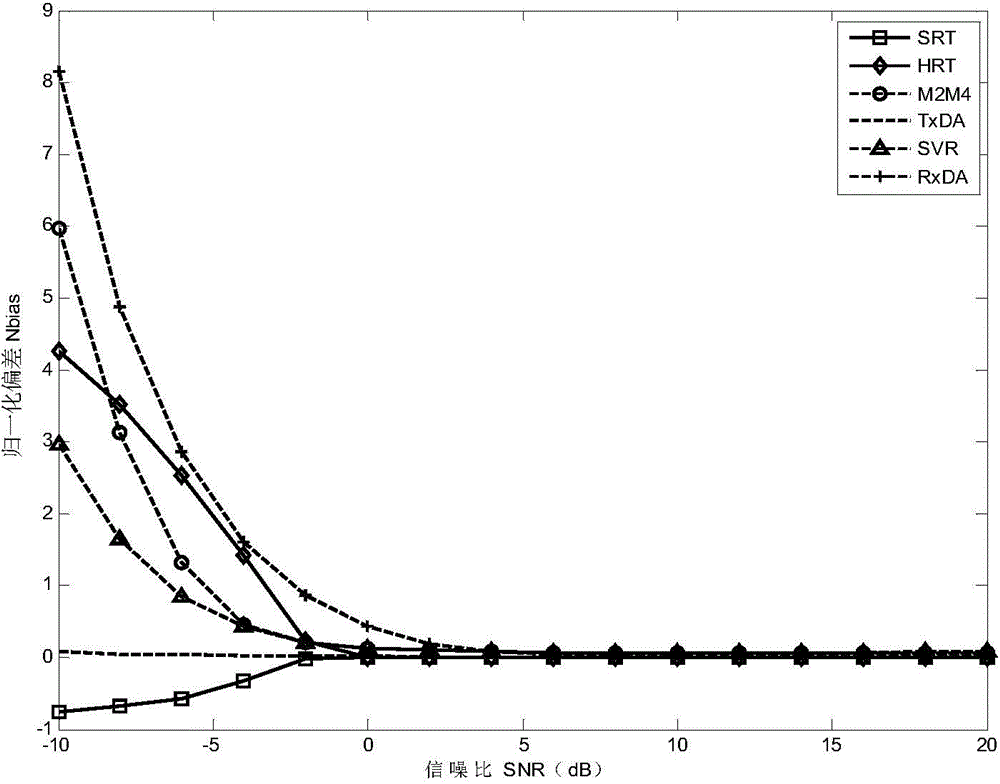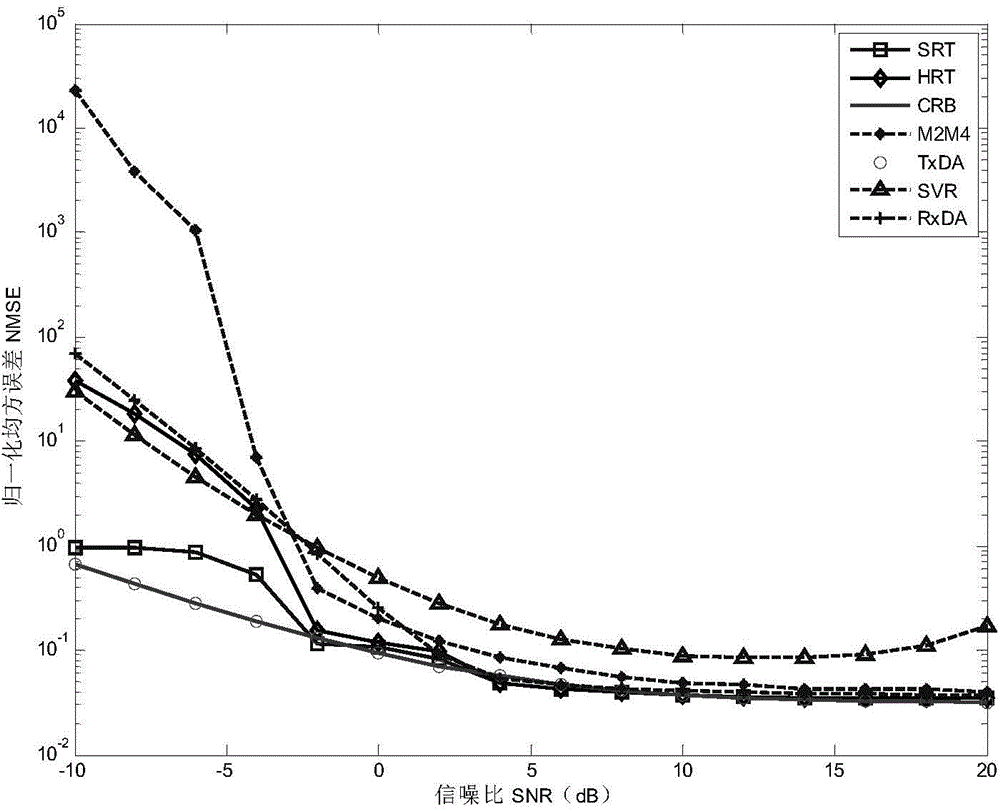Signal to noise ratio estimation method under frequency hopping communication interference condition
A technology for signal-to-noise ratio estimation and frequency-hopping communication, which is applied to electrical components, baseband system components, transmission systems, etc., can solve problems such as high complexity, low estimation accuracy, and narrow range of signal-to-noise ratio estimation, and improve accuracy The effect of high accuracy and high estimation accuracy
- Summary
- Abstract
- Description
- Claims
- Application Information
AI Technical Summary
Problems solved by technology
Method used
Image
Examples
Embodiment Construction
[0043] The present invention will be described in further detail below in conjunction with the accompanying drawings.
[0044] 1. System model
[0045] This example considers the case where MPSK modulated signals are transmitted in complex channels, and the system model is as follows figure 1 shown. Assuming that precise carrier and symbol timing recovery has been achieved at the receiving end, the symbol length used for SNR estimation is K, the number of symbols per hop in slow frequency hopping should be divisible by K, the modulation order is M, and oversampling N ss . The root-raised cosine filter is used for both the shaping filter and the matched filter, and the filter length is L.
[0046] Matched Filter Output Judgment
[0047] y k = y n | n = k N ss ...
PUM
 Login to View More
Login to View More Abstract
Description
Claims
Application Information
 Login to View More
Login to View More - R&D
- Intellectual Property
- Life Sciences
- Materials
- Tech Scout
- Unparalleled Data Quality
- Higher Quality Content
- 60% Fewer Hallucinations
Browse by: Latest US Patents, China's latest patents, Technical Efficacy Thesaurus, Application Domain, Technology Topic, Popular Technical Reports.
© 2025 PatSnap. All rights reserved.Legal|Privacy policy|Modern Slavery Act Transparency Statement|Sitemap|About US| Contact US: help@patsnap.com



